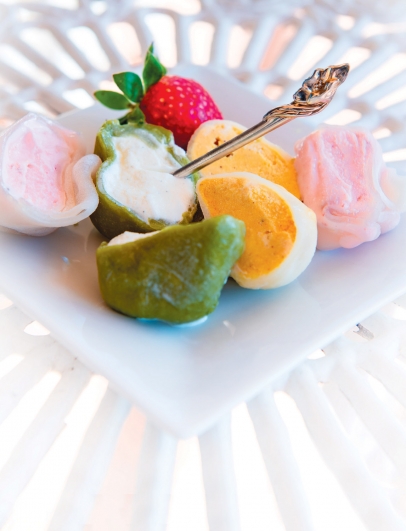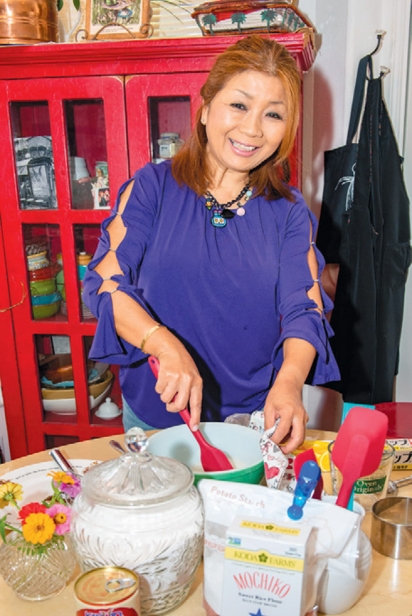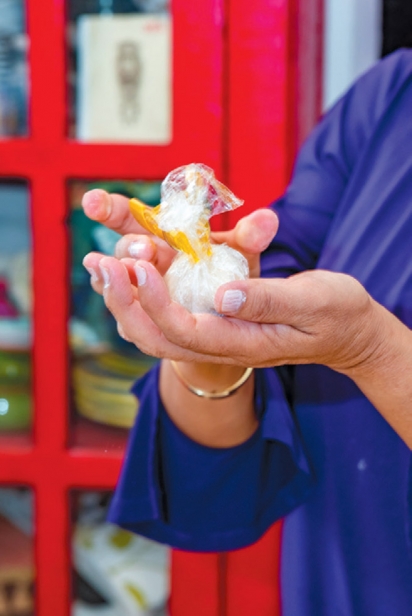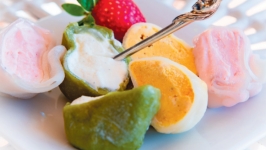Mochi
Macaron-shaped and mega-decadent, the tiny mochi—a traditional Japanese rice cake often filled with ice cream—has major flavor. And Sarasota chef Noriko Sidlow is an accomplished maker of the mini confection.
The gluten- and cholesterol-free dessert consists of mochigome— a short-grain japonica glutinous rice—as well as water, sugar, cornstarch, and various flavors (from pistachio to rose to blood orange to chocolate and vanilla). The rice is pounded into a paste and molded into a round shape. The deep freezers at Whole Foods Markets often carry them as individual selections, and they are boxed staples at Trader Joe’s.
“Mochi and mochi ice cream are two different things. Mochi is made from a special kind of Japanese rice and pounded into a paste, but mochi ice cream is one way to use it,” says Sidlow, who teaches mochi-making classes (with ice cream as well as the strawberry-rich ichigo daifuku variety) from home. “Mochi ice cream has become a popular dessert and I show people how to make it, from vanilla to strawberry flavors. It’s kind of new and trendy.”
Mochi may be trendy but its history is lengthy. For more than a millennium, it has been made in a ceremony called Mochitsuki to celebrate the Japanese New Year. Japanese farmers were known to consume the food during the winter to increase their stamina and Japanese samurai ate mochi on expeditions (it was easy to carry and prepare).
“Regular mochi is a very traditional food in Japan,” says Sidlow, who pairs local Detwiler’s Farm Market ice cream with the mochi she creates. “We eat it on special occasions like festivals and ceremonies. I personally like to eat the traditional mochi, the savory kind.”
Sidlow brought her love of East Asian fare to Florida more than a decade ago from her home in Kobe, Japan. A self-taught cook, she now makes Japanese, Italian, Chinese, French, Jewish, and European dishes. She previously owned a company in Japan that produced events such as fashion shows, business meetings, bridal fairs, and weddings. She is also a trained pianist, violinist, and keyboard instructor, and teaches Japanese cooking privately as well as publicly at State College of Florida. Mochi was always just part of her upbringing, as it has been for Japanese people for centuries.
In folklore, the first Mochitsuki ceremony occurred after the Kami were said to have descended to the earth, which was following the birth of rice cultivation in Yamato during the Yayoi period. During the Heian period, mochi was served as a “food for the gods” and used in religious offerings in Shinto rituals performed by aristocrats. It was even considered a talisman for happy marriages.
Many Westerners likely know mochi less for its godly good fortune and more for its great flavor. But during Sidlow’s classes, they can get to know a bit of both.
Noriko Sidlow: 941-928-2246; facebook.com/moshimoshibonjour









